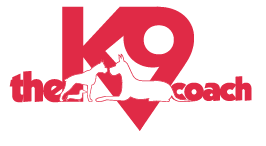Don't Coddle The Dog
Coddle – to treat with extreme or excessive care, regardless of the situation
Ask yourself: Is the affection you are showing for your benefit or the animals benefit?
Extreme attention/affection can have the opposite effect of the desired effect, which is to socialize.
Giving too much attention to an animal creates a need in the animal for constant attention and they are less likely to become independent thinking dogs, explore on their own, or make judgments. We want to create dogs that are willing to work and be creative in their surroundings.
Negative behaviors such as: being timid (hiding behind their handler or fearful of new situations), unwillingness to explore, submissive urination, resource guarding, or aggression are signs that too much attention is being given by one person.
Begin your bonding/relationship with your dog keeping the end result in mind. We don’t want to be the best friend in the world to these dogs. We want to reserve that for the relationship with the client.
TRAIN…yes, BOND…yes, SPOIL…NO!!!
Affection and care are necessary for dogs to feel confident to socialize with people, other dogs and the environment. Be aware of damage that could occur by over doing the affection.
YOUR DOG WILL TELL ON YOU
Dogs are experts at reading our body language. If you are submissively needy in your interactions with your dog (petting/spoiling so the dog will meet your needs or love you the most) you are not being the leader and trainer your dog needs to reach its full potential.
IF YOU DO NOT LEAD YOUR DOG…YOUR DOG WILL TRY TO LEAD YOU
Examples of Codding the Dog
Baby Talk
Talking to or releasing the dog from his Kennel because he whines or barks
Allowing the dog to jump on the bed or furniture uninvited.
Allowing dog on the furniture, lap, touching you 100% of the time.
Sheltering the dog from things you think he will be afraid of.
Keeping your room quest because your dog is sleeping
Not touching your dog’s ears, feet, tail, etc because they don’t like it
Making a production of leaving the house or coming into the room (learned separation anxiety)
Petting a pushy dog who nudges your hand
Failing to follow-through on a command because your dog doesn’t want to.
Allowing your dog to dictate where he wants to go to the bathroom
Holding your dog in your lap when they are frightened
Reacting when your dog gets stepped on or hit with the door
Making the dog more comfortable than need be. Keeping a towel on the floor because they do not like the floor or a cloth under the bowl because they do not like the sounds when it moves
Getting in the dog's kennel because they are afraid or lonely. Sleeping in the shower during storms
Being on the floor constantly giving your dog attention; creating a needy dog
Not slamming doors or dropping metal bowls or stacks of books because the dog is afraid
Examples of Building Confidence:
Coaching / Motivating
Ignoring Unwanted Behavior
Inviting the dog on the bed for “cuddle” training. The dog is not permitted to step on you to get on or off the bed.
The dog must wait for the release cues from commands, exiting crates, doors, cars, etc.
Get the dog used to resting / staying in different places, floors, rooms, etc.
Desensitize/ Counterconditioning, shape things they respond to without coddling or flooding. (Take time / Interval Training)
Being normal, living your everyday life.
Counter Conditioning by pairing touch with positive reinforcement
Teaching your dog to be an unobtrusive helpmate by ignoring a dog who runs to the door to greet and rewarding when they don’t
Recognize your dog’s effort toward two-way communication and use it for training..Use "What" or if it is a constant behavior use it to teach self-control. "Place, Go"
Follow-through, reinforce teaching, support learning, but get it done.
Standing where you want to stand. Choose a different spot every time so your dog doesn’t pattern. DO NOT WALK AROUND!
Holding, picking up, hugging, or putting your arm around the dog to train restraint and to desensitize to all different types of touch and holding
Oops! And move on. Act as nothing happened and/or redirect his attention
Get dogs used to laying down and sitting on all surfaces: concrete, grass, metal, dirt, gravel, etc. Desensitize.
Getting in the dog's space to eliminate resource guarding and/or keeping the dog from becoming territorial
Bonding time with your dog. Your love is essential but do not overdo it
If the dog reacts to loud noise, use it as an opportunity. Your dog has just communicated an area of weakness for you to desensitize him to.
